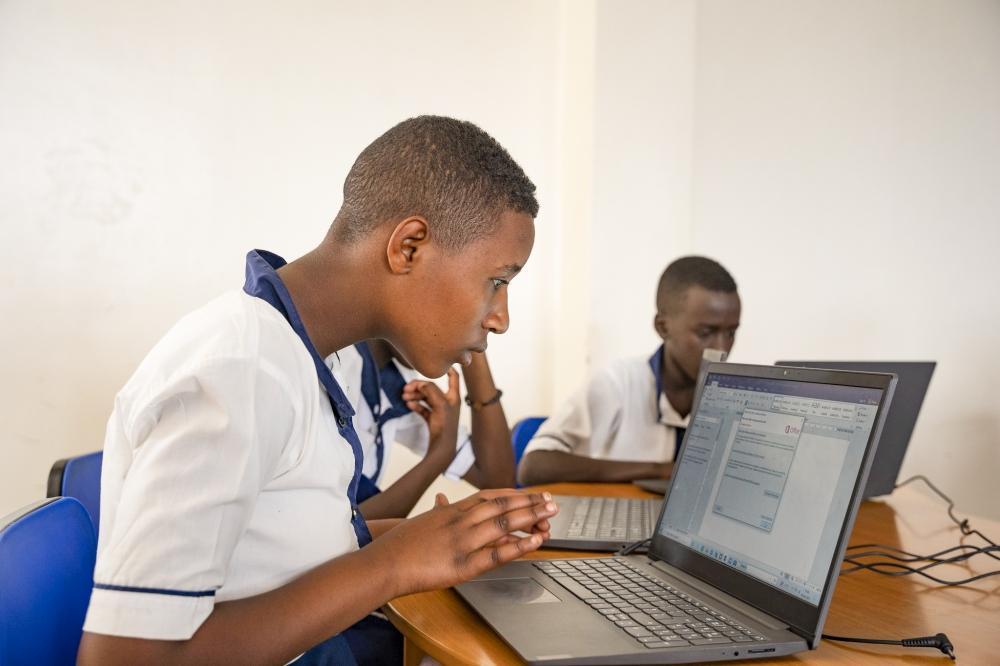Africa-Press – Rwanda. Rwanda is set to introduce three newly structured learning pathways in secondary schools, a reform aimed at equipping students with skills and knowledge that better align with academic advancement and the demands of the job market.
The Ministry of Education on Friday, June 20, announced plans to phase out the traditional Advanced Level subject combinations and replace them with more flexible, holistic learning models. The initiative, which is expected to be rolled out in phases, will begin with Senior 4 students.
Speaking to The New Times, Flora Mutezigaju, the Deputy Director General of Rwanda Basic Education Board (REB), students currently in Senior 5 and Senior 6 will continue with the existing subject combinations until they complete the cycle.
1. How the pathways will be rolled out
Mutezigaju explained that the new pathways are designed to increase student motivation and improve learning outcomes by allowing learners to choose subjects that align with their interests, career goals, and strengths.
“The new learning pathways will be implemented gradually. Starting with Senior 4 students ensures a smooth transition, while those in the upper grades will finish their current academic tracks,” she said.
2. Structure and career relevance
The reform introduces three main pathways: Mathematics and Science, Arts and Humanities, and Languages, with each designed to broaden career options and reflect global trends in education.
“Students in the Mathematics and Science pathway will be well-prepared for careers in fields such as medicine, engineering, data science, economics, and finance,” Mutezigaju noted.
“For those who choose the Arts and Humanities pathway, options will include education, law, psychology, philosophy, and other related fields. Meanwhile, the Languages pathway will open doors to careers in communication, diplomacy, interpretation, anthropology, and more.”
In addition to their chosen pathway, all students will study Information and Communication Technology (ICT) and Entrepreneurship to build digital skills and cultivate business acumen. “This ensures that students are not only employable but also capable of creating jobs for themselves and others,” she emphasized.
General Studies will also be a compulsory component, helping learners develop critical values, life skills, and positive attitudes to navigate an increasingly complex world.
3. Bilingual advantage
Language learning is another critical aspect of the reform.
Students will study both English and French to boost their global competitiveness.
“Language skills are a significant asset in the global economy,” Mutezigaju said. “Mastering both official languages will give our students a competitive edge.”
4. What’s changing and why
The current system limits students to three specialized subjects, which has often restricted their career choices and flexibility. Schools typically offer only a handful of subject combinations, leaving many students with limited or no choice.
“The first major change is addressing this over-specialization. The new pathways allow for more subject variety, enabling students to make informed decisions based on their interests and future aspirations,” Mutezigaju said.
Under the new framework, every secondary school will be required to offer at least two of the three pathways, with many expected to provide all three. This ensures that students across the country, regardless of location, will have better access to relevant education choices.
5. Expected outcomes
According to REB, the government expects the reform to drive a notable increase in upper secondary school enrollment. “By making the curriculum more engaging and relevant, we anticipate higher student retention and performance,” she said.
Additionally, there is hope to see more students transition into higher education, both locally and internationally, with the skills and qualifications needed to thrive in a range of academic and professional environments.
6. Inspired by global best practices
The move aligns with Rwanda’s Competence-Based Curriculum (CBC), which emphasizes student-centered learning and skill development. “All countries that follow CBC use similar learning pathways because they provide every learner with a chance to succeed,” said Mutezigaju.
“If a student doesn’t perform well in Biology, they might excel in History or another subject. The CBC supports that flexibility.”
While the reform is rooted in local educational goals, it also draws on successful models from other countries, adapted to Rwanda’s context to meet the needs of its learners and labour market.
7. Engaging stakeholders
To ensure the success of the reform, there is planning a nationwide awareness campaign targeting students, parents, teachers, and communities.
“We will use various platforms to explain the meaning of the new pathways, their benefits, and the career opportunities each one presents,” Mutezigaju said.
“Parents and students will receive guidance on how to make informed decisions based on individual competencies and long-term goals.”
For More News And Analysis About Rwanda Follow Africa-Press






